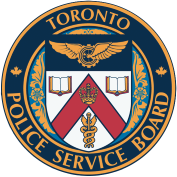
II Strategic Plan
|
REPORTING REQUIREMENT |
Information on the implementation of the strategic plan and the status of the included performance objectives to be included in the annual report. |
|
LEGISLATION |
Community Safety and Policing Act, 2019, S.O. 2019, c. 1, Sched. 1, ss. 39 and 41(1a) |
It is the Policy of the Toronto Police Service Board (Board) that:
- The Board will, in accordance with the Community Safety and Policing Act, 2019 and its associated regulations, prepare and adopt a strategic plan for the provision of policing in Toronto, which will address the following matters, at a minimum:
- How the Board will ensure the provision of adequate and effective policing in accordance with the needs of Toronto’s population;
- The objectives, priorities, and core functions of the Toronto Police Service (Service);
- Quantitative and qualitative performance objectives and indicators of outcomes relating to:
- The provision of community-based crime prevention initiatives, community patrol, and criminal investigation services,
- Community satisfaction with the policing provided,
- Emergency calls for service,
- Violent crime and clearance rates for violent crime,
- Property crime and clearance rates for property crime,
- Youth crime and clearance rates for youth crime,
- Police assistance to victims of crime and re-victimization rates,
- Interactions with persons described in Item 1d, below,
- Road safety, and
- Any other prescribed matters or locally relevant topics;
- Interactions with:
- Youths,
- Members of racialized groups,
- Members of First Nation, Inuit and Métis communities, and
- Persons who appear to have a mental illness or a neurodevelopmental disability;
- Information technology;
- Resource planning;
- Police facilities; and
- Any other prescribed matters or locally relevant topics.
- In preparing or revising the strategic plan, the Board will consult with:
- The Chief of Police;
- Toronto City Council;
- Groups representing the diverse communities of Toronto;
- School boards, community organizations, businesses and members of the public in Toronto;
- Any other relevant stakeholders identified by the Board; and
- Any other persons, organizations or groups prescribed by the Ministry.
- The strategic plan will provide an overview of the consultations that were conducted during the strategic plan preparation and/or revision process and state whether and, if applicable, how the needs and concerns regarding policing identified during the consultations have been addressed by the strategic plan.
- In preparing or revising the strategic plan, the Board will consider, at a minimum:
- Results and key findings of the consultations that were conducted;
- Any community safety and well-being plans adopted by the City of Toronto; and
- The needs of members of Toronto’s diverse communities, including the needs of members of racialized groups and of First Nation, Inuit and Métis communities.
- The Board will review and, if appropriate, revise the strategic plan in accordance with the regulations, if any, at least once every four years.
- The Board will publish the strategic plan in accordance with the regulations, if any, on the Toronto Police Service Board website.
adequacy standards, planning, administration and infrastructure, board administration